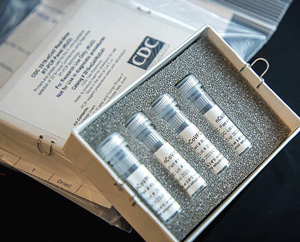
Adolescents at risk of unintended pregnancy
Developing regions have 23 Million adolescents at risk of unintended pregnancy, due the fact that they do not use modern contraceptives and if they meet their contraceptive needs, it would dramatically reduce unintended pregnancies and maternal deaths.
This was said in a new report that highlighted that many who want to avoid pregnancy are not receiving the services they need to protect their health and delay childbearing.
The report, “Adding It Up: Costs and Benefits of Meeting the Contraceptive Needs of Adolescents,” by Jacqueline E. Darroch et al was released in May 2016 by the Guttmacher Institute.
The report found out that an estimated 38 million of the 252 million adolescent women aged 15–19 in developing regions are sexually active and want to avoid pregnancy. Yet 23 million of these adolescents have an unmet need for modern contraception: they are sexually active and want to avoid having a baby within the next two years but are not using modern contraceptives.
Most adolescents with unmet need are using no contraceptive method (84%); the remaining 16% rely on traditional methods, primarily withdrawal and periodic abstinence, which are less effective than modern methods.
IN another study, abortion rates declined significantly across most developed regions between 1990 and 2014. However, during the same period, they remained largely unchanged in developing regions.
The findings come from a new study by the Guttmacher Institute and the World Health Organization (WHO), which show that between 1990 and 2014, the overall number of abortions per 1,000 women of childbearing age (15–44 years old) in developed countries dropped from 46 to 27, while in developing countries, it changed little, from 39 to 37, a non-significant difference.
The study’s findings appear in an article, “Abortion incidence between 1990 and 2014: global, regional, and subregional levels and trends,” by Gilda Sedgh et al., published in The Lancet.
Currently, 15 million adolescent women use modern contraceptives, thereby preventing 5.4 million unintended pregnancies each year. Of these pregnancies, an estimated 2.9 million would have ended in abortion, many of which would have been unsafe. Current use of modern contraceptives also averts 3,000 adolescent maternal deaths annually in developing countries.
“Making it possible for young women to avoid unintended pregnancy and childbearing until they feel ready to become mothers can have a profound impact. It allows them to achieve healthier lives for themselves and their children, more education and better job opportunities,” said lead author Jacqueline.
“The positive impact of investing in sexual and reproductive health services for adolescent women is undeniable,” she said.
Meanwhile, researchers estimate the total cost of providing modern contraceptives to the 15 million adolescent women currently using them is $222 million per year. Improving existing services to better serve current users (including increasing young people’s access to accurate information and education and ensuring they have a range of modern methods from which to choose) would increase the cost to $313 million per year.












































